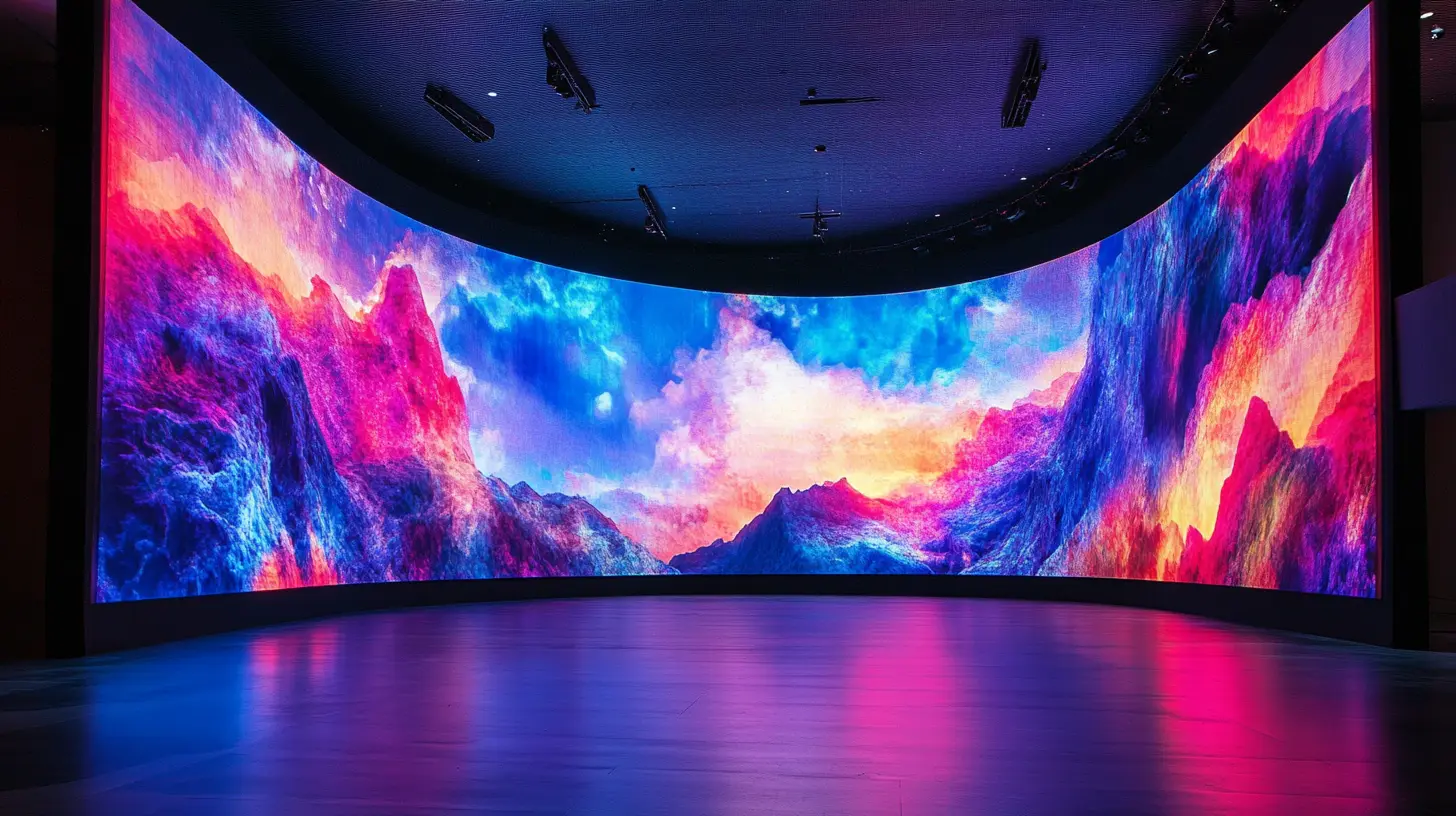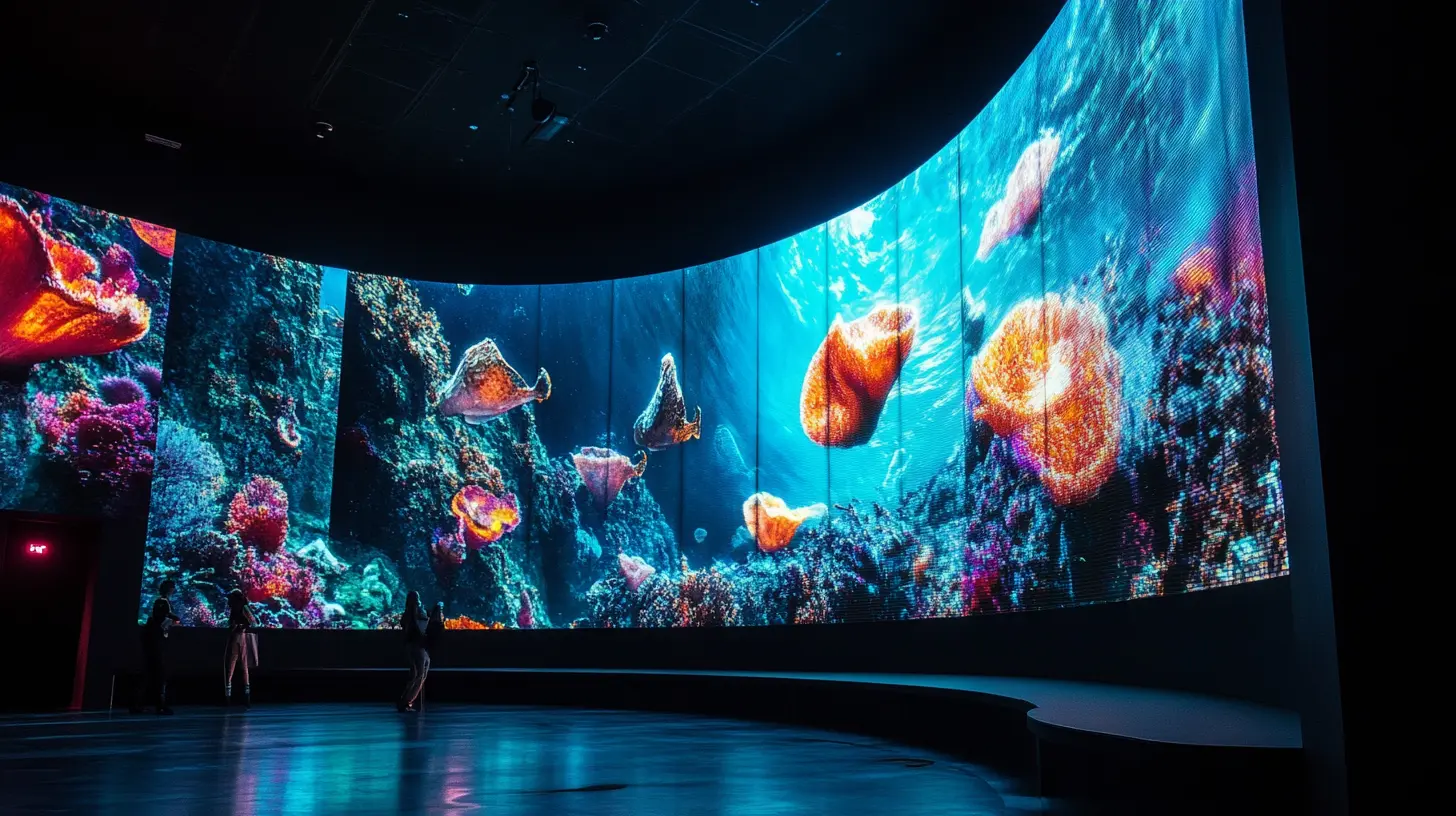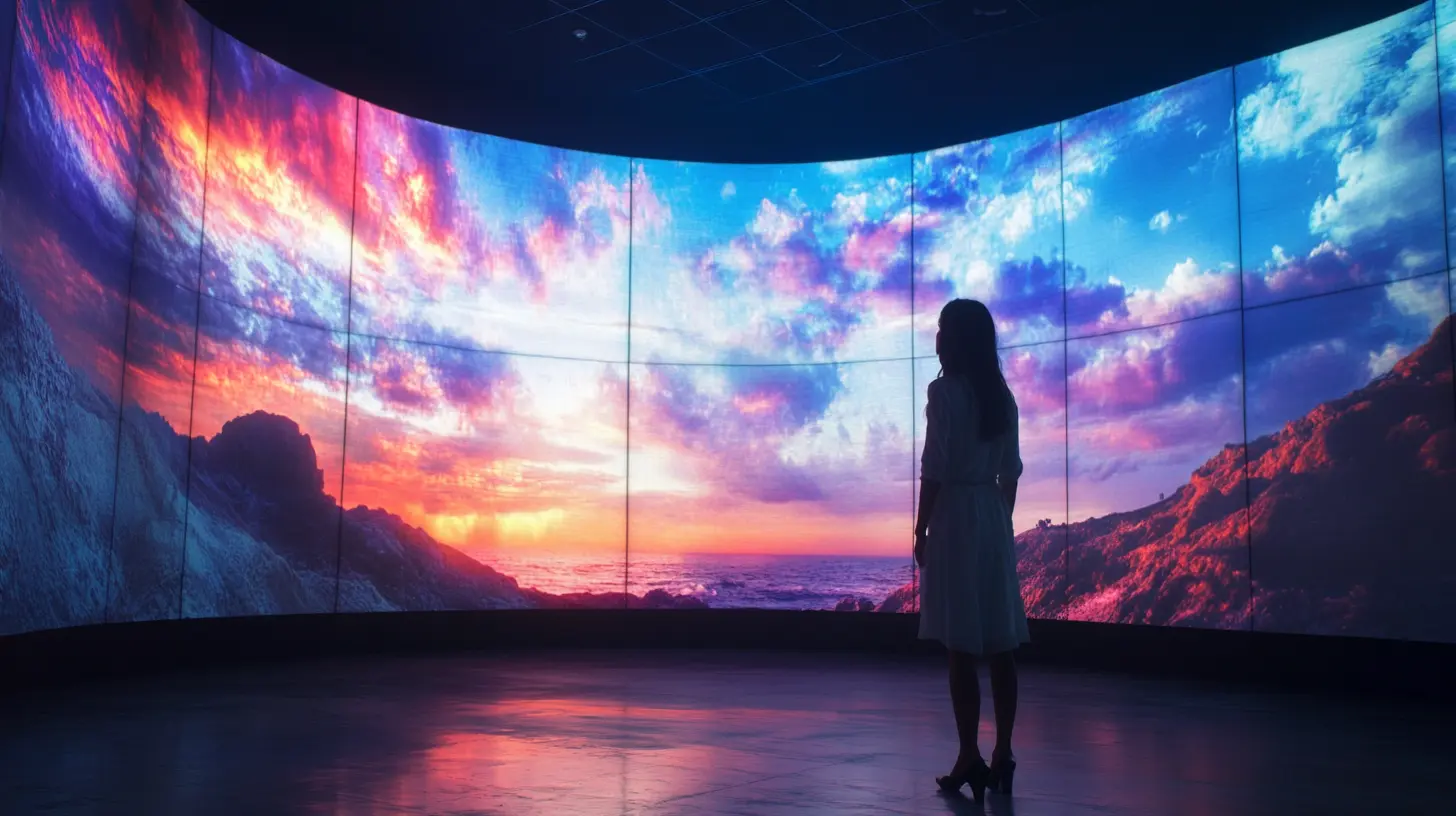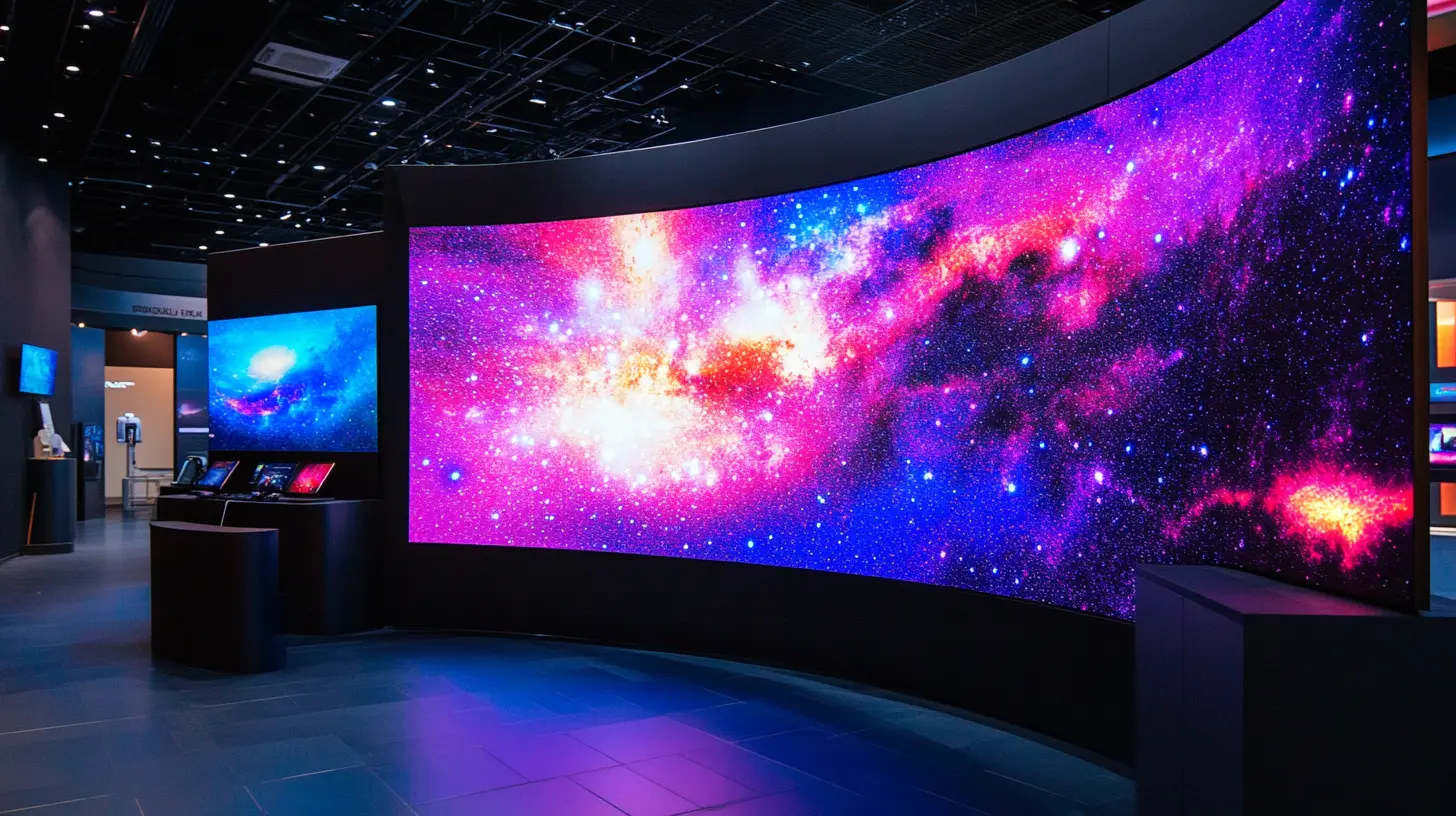
-
Home
-
Products
-
About Us
-
Case
-
News
-
BLOG
-
FAQ
-
Contact Us
Leave Your Message

Innovative display technologies keep climbing higher in demand, resulting in a fast shift to Flexible LED film screens. MarketsandMarkets report states that the global flexible display market would grow to $16 billion by the year 2025, with a CAGR of 22.3%. The growth is attributed to modern display technology and its increasing applications in industries such as retail, advertising, and entertainment. The years ahead of 2025 will bear witness to highly flexible LED film screens that change the whole game of interaction with multimedia content, truly bridging the distinction between versatility and aesthetics.
Shenzhen Qianhai Hengyunlian Technology Co., Ltd. specializes in flexible transparent LED displays and multimedia applications. The commitment helps keep pace with the strong market trend toward improved visual experiences and seamless interaction between digital content and physical environments. As the market for Flexible LED film screens develops, a strong emphasis will need to be placed on innovation to attract audiences and provide immersive experiences. We want to spearhead this shift and shape trends in this regard, aided by next-gen technology and a focus on transparent displays, thereby leading the transformation of the display sector.

The rapid advancement of technology has brought major transformation in the display industry with the futuristic flexible LED film screen displays that not only facilitate better viewing experiences but also provide infinite possible applications beyond and above traditional screen technology. Flexible LED screens, thus, are expected to redefine the interaction with visual content and are considered very important to future-proof display solutions as we propel toward 2025 and beyond. Adaptability is one penchant of the flexible LED film screens-rather than rigid, common ones; they appear to be attached to a great variety of different environments-from retail to architectural designs. Their thin and lightweight nature allows them to be easily fitted into curved surfaces created by forming complex sites, thus enhancing an interactive experience even at the least expected places. In addition to providing a facility for providing a bewitching appearance, this flexibility instills creative installations that wow viewers, making them a good value for both commercial and artistic installations. Demand drives the creation of flexible LED films: sustainability. New display technologies are energy-efficient, and these types of displays produce less power without diminishing brightness or image quality. Materials are becoming more advanced in flexible LED technologies, which cause an increase in the life span and a major reduction in the environmental footprint. The present-day society, becoming more and more environmental conscious, probably will make flexible LED film screens the resources very essential to industries when trying to future-proof their products.

The flexible LED film screen market will undergo significant changes, with several emerging technologies influencing this. As per a report published by Market Research Future (MRFR), the market for flexible LED displays in the world is estimated to grow at a CAGR of about 26% from 2020 to 2027. Growth will be caused by advancements made in science and manufacturing technologies to improve LED films' performance and versatility.
One of the important technological advances is the organic light-emitting diode (OLED), better flexibility, and improved color reproduction compared to conventional LEDs. The International Data Corporation (IDC) states that by 2025, 50% of the total display market will consist of OLED flexible screens. This will not only extend the customer experience but also allow applications in retail, automotive, and consumer electronics to flourish.
In addition, nanotechnology innovations make flexible LED films more efficient in light management and durability. The report of Smart Displays Research Group states that incorporating nanocomposite materials could enhance remarkably the thermal and mechanical properties of LED films, hence, making them sturdy enough for many environments. Consequently, with such technologies converged, trends will be poised in flexible LED film screen features to a great extent: the years to come will redefine access to viewing content.

This article talks about the aesthetic evolution of LED film screens attributable to design trends and technological development. Industry professionals believe that the global LED market will be worth about $100 billion in 2025, where flexible LED screens will be earning a big chunk of that. According to MarketsandMarkets, the flexible display segment will witness a CAGR of over 25% in this duration, indicating an ever-growing demand for glamourous yet flexible solutions.
Design flexibility is wherein one of the top trends is complementing the aesthetic value of LED film screens. Manufacturers are rapidly focusing on lightweight and customizable designs catering to applications ranging from retail environment to large-scale events. The curved or irregularly shaped displays create ways for brands to engage audiences in fresh, alert ways to get attention and enhance user experience. Meanwhile, advancements in pixel pitch technology have resulted in higher-resolution displays that can achieve more crisp imagery from even very close viewing distances.
Sustainability is becoming one of the stronger driving concerns in the LED display industry. Eco-friendly materials and energy-efficient manufacturing processes are encouraged to attract buyers conscious of keeping the environment safe. According to Grand View Research, the green LED lighting market is set to grow at a CAGR of over 20%, propelled by the call for ushering in sustainable practices in the tech industry. With 2025 in sight, we trust beauty meets green design, shaping perceptions and applications of LED film screens in a whole new way.

As the film industry heads into the future, 2025 will most probably be one of the years marked by transforming flexible LED film screens. Left is one of the nightmares below the development of the new technology, which was sustainable and eco-friendly in the LED Film-making process. Adoption of more eco-friendly practices in manufacturing processes not only improves the longevity and effectiveness of LED screens, but it will also minimize the overall environmental footprint and follow the global trend of greener technologies.
Some of the recent developments in the film sector indicate an increasing trend toward sustaining the film businesses. Clean energy practices are coming to the picture in making films in the markets. Movies are screaming loud on awareness campaigns about reducing emissions and waste. Movie titles showcasing this current trend include the next adventure in a popular action series that will establish stringent eco-friendly protocols on set. This kind of alludes to a more extended industry understanding of the fact that creative innovation necessarily has to travel together with its most responsible stewardship.
Besides, the spread of LED screens across the major cities in the world signals a major shift in granting audiences more sustainable viewing experiences. There are up-and-coming expectations that the employing of these advanced display technologies in cinemas will increase. Industrialists are going beyond providing extraordinary cinema experiences and are bringing the audience into a culture of greater sensitivity to environmental impacts. This is what sets precedents for future film production, inspiring a culture to push for sustainable development as much as technological advancement.
Flexible LED film screens are at the forefront of numerous developments across several industries as we go through the years 2025 and beyond. With technology changing the display of information and audience interactions, these displays create new and special settings-from retail to education. The thin design and flexibility of the screens lend themselves readily to practically any given physical environment. Thus, in any of its applications, whether digital signage, interactive display, or immersive environment, their role is paramount.
In education, increasingly flexible LED displays are proving to be critical in augmenting learning experiences. Recent donations of high-definition LED displays to institutions like the Hong Kong City University show a mounting awareness of their usefulness. The interactive LED displays create dynamic presentations and collaborate on learning, making educational spaces more interactive and appealing. In retail, these boards can be used attractively for creating stylish storefront windows as well as engaging in-store experiences that attract customers and encourage product interaction.
But as industries embrace these innovations, problems such as tariffs and trade barriers, especially in the United States, have begun to show up. The imposition of these recently increased tariffs on such products acts as an impediment to the manufacturers and importers, thus forcing them to make changes in their business strategies. Yet, maintaining such challenges is an indication of the inherent resilience and innovative spirit of the industry, positioned to have flexible LED film screens on the cutting edge for years to drive farther growth across industries.
Consumer preferences will dominate the future of LED film technology as we move toward 2025 and beyond. The latest Global LED Market Insights Report states that flexible LED film screens have a well-developing demand in applications ranging from retail to entertainment and automotive industries. More buyers want screens that are not only available in high resolution but are also flexible in their use in diverse areas and applications. A remarkable 73% of all consumers prefer lightweight designs that facilitate easy installation and relocation reflecting a shift towards more modular display solutions.
In addition, green technology is becoming increasingly popular. The survey done by the Consumer Electronics Association discovered that 68% of consumers considered energy efficiency to be highest priority when selecting display technologies. Hence, the time is now for manufacturers to innovate with sustainable material usage and energy-efficient processes, taking their product lines in even closer alignment with environmental concern. The incorporation of intelligent technology, mostly IoT provisions for real-time content management and remote monitoring, is steadily gaining more ground among customers, with 62% opting for solutions that easily mesh within already existing smart ecosystems.
Consumer figures lead one very obviously to airbags that are shopping for flexible, as well as their entirely eco-friendly and tech-savvy LED tape solutions: a more than bright future for manufacturers if their products comply with consumer demands as they change and become increasingly competitive.
The flexible LED display market is transforming to be at the threshold of a breakthrough and definitely very strong market growth is predicted from now till 2025. With the industries gradually looking at different dimensions of flexible solutions in visual communication applications, flexible LED screens are becoming increasingly popular since they provide benefits that lie within being adaptable alongside delivering high-quality displays. Further, its characteristics will be possible to create new designs that will make such surfaces easily integrable into different environments-such as venue retail stores, event place-a lively yet dynamic visualizing experience according to the need.
The analysis of the market indicates that the increase in needs for flexible LED displays is attributed to the significant technological advances that have enhanced their resolution, brightness capacity, and energy consumption efficiency. Besides, there is a growing market for such displays for their ability to offer curved or irregular shapes for the screens, as more brands are seeking differentiated experiential activities for their customers. This is evident especially in the advertising industry where the apparent interest captured by such displays is more than those of the traditional ones. Advances in production methods and the drop of costs are expected to bring down the flexible LED articles from multinational large corporates to small and medium businesses hoping to enhance their potential visual reach.
Accordingly, sustainability concerns have changed consumer preferences, and flexible LED displays are now poised to be at the forefront of that shift. These screens are longer lasting and consume less energy than traditional displays, so they provide greening alternatives in terms of the growing focus on green technology. With the increased application of sustainable practices in industries, the flexible LED market is set to expand, which makes it one of the most interesting segments to follow as 2025 and beyond approaches.
There is an imminent advent of flexible LED film screens in the field of display manufacturing technology; this is posing the best challenges to be faced in the industry. One of the biggest obstacles is the complex production processes. Compared to rigid screens of earlier and earlier technologies, flexible LED films demand advanced materials and innovative fabrication techniques. Evenness of pixel density is essential in these films, as irregularities in pixel density lead to performance variations. Utilization of high precision printing methods with quality and flexibility to designs is a priority of manufacture investments into research.
Another major issue is durability. Flexible LED screens must withstand heavy bending and twisting without compromising their integrity or performance. This involves the development of robust materials that withstand wear and tear while maintaining top-quality vision. Researchers are working on new polymer compositions and protective coatings to enhance the longevity of such screens. Moreover, integration with smart technologies adds another level of complexity, as it will have to ensure the flexible films accommodate sophisticated features without sacrificing the flexibility, or without creating any affordability issues.
Sustainability is beginning to be a key focus for manufacturing. Increments in eco-friendliness in line with globalization mean that the manufacturers are being pressured to decrease harmful materials and increases waste. Recycling initiatives and production techniques that will be environmentally friendly will have to be established to ensure that the company keeps its competitiveness in the market as a whole. By tackling these challenges, the industry may make history by achieving mass usage of flexible LED film screens, such as the change we see in how technology is leveraged for everyday interaction.
Flexible LED film screens are innovative display technologies that are lightweight, thin, and adaptable, allowing them to be integrated into various environments and curved surfaces, enhancing visual experiences.
These screens offer lower power consumption, longer lifespans, and use eco-friendly materials, making them a more sustainable choice compared to traditional display technologies.
Key trends include design flexibility for customizable applications, advancements in pixel pitch technology for higher resolution displays, and a focus on sustainable materials and manufacturing processes.
Manufacturers encounter challenges such as complex production processes, maintaining uniform pixel density, ensuring durability against bending, and integrating smart technology.
The flexible display segment is projected to expand at a compound annual growth rate (CAGR) of over 25%, contributing significantly to the estimated $100 billion global LED market.
Durability is crucial because flexible LED screens need to withstand bending and folding while maintaining their visual quality and overall performance.
Aesthetic appeal is significant as lightweight, customizable designs allow brands to engage audiences creatively, making LED film screens more appealing in various commercial and artistic contexts.
Manufacturers are focusing on using less harmful materials, reducing waste, implementing recycling initiatives, and developing eco-friendly production techniques to meet sustainability demands.
Advancements in materials are expected to enhance longevity and performance, allowing flexible LED screens to withstand wear and provide high-quality visuals over extended periods.
They are set to revolutionize interactions with visual content by providing versatile applications, allowing for creative installations, and supporting sustainable practices in diverse industries.
